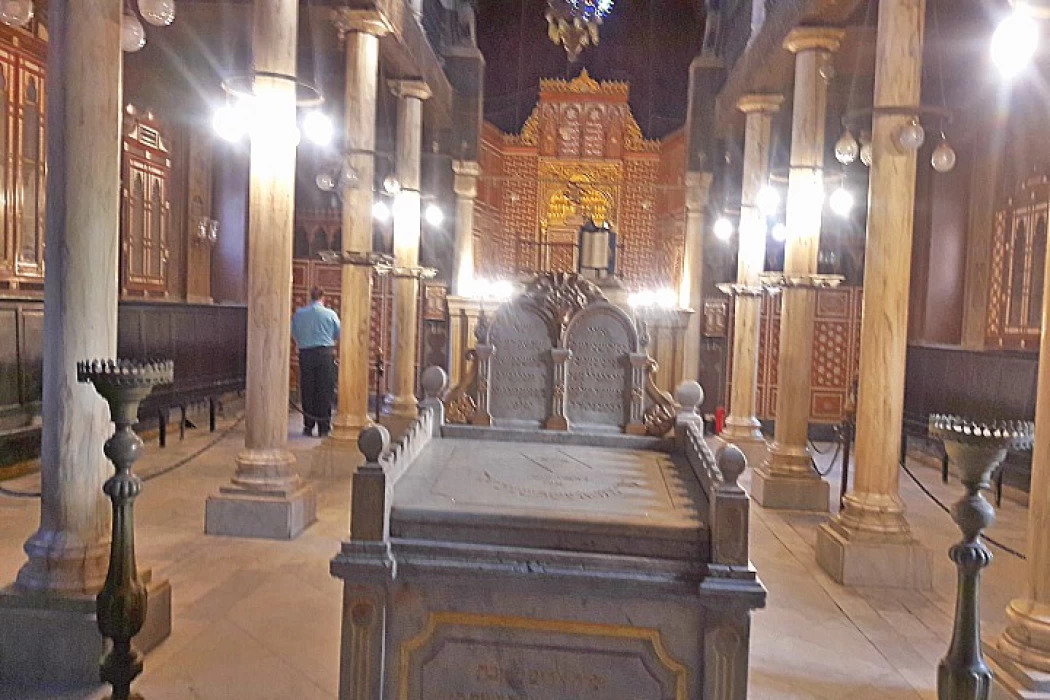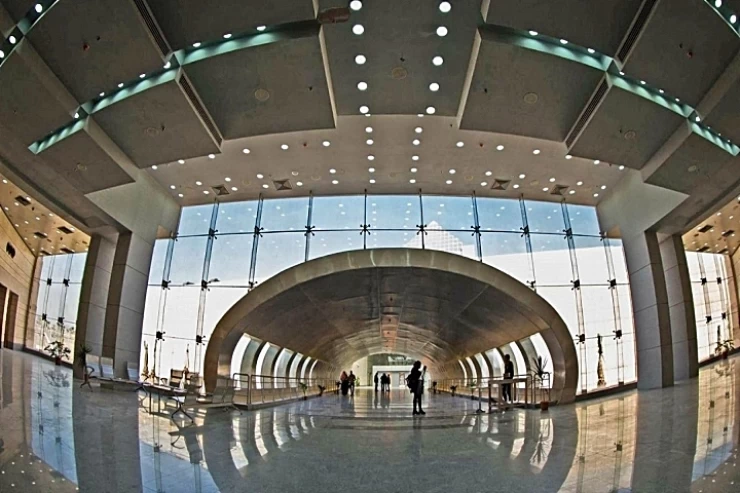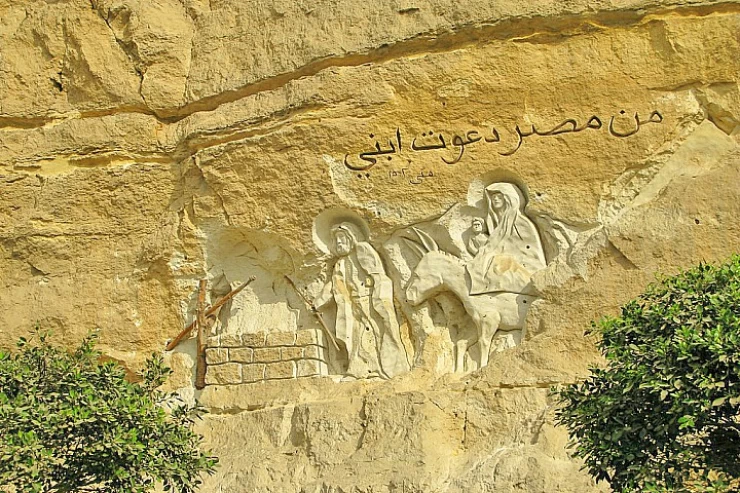
Ben Ezra Synagogue | Coptic Cairo
Synagogue of Ben Ezra
The specific founding date of the Ben Ezra Synagogue is unclear, however, evidence from geniza documents indicates it was around prior to 882 CE and possibly before the Islamic era. In 882, the leader of the Coptic Orthodox Church sold a church and its property to a Jewish group, causing certain 19th-century academics to speculate that this occasion led to the creation of Ben Ezra. However, the buyers backed the Talmudic schools in Babylonia, whereas Ben Ezra followed the teachings of the rival Talmudic schools in Syria Palaestina. Modern academics agree that the 882 land deal involved a competing religious institution. There is limited information regarding the original structure. In approximately 1012, Al-Hakim bi-Amr Allah, the Fatimid calipha, ordered the destruction of all Jewish and Christian places of worship. The Ben Ezra Synagogue was torn down, and its bricks and timber were sold for scrap.
Construction of the second building took place in the 11th century and was completed in 1168.
Between the years 1025 and 1040, al-Zahir li-i'zaz Din Allah, the following caliph, approved the repair of Christian and Jewish institutions, resulting in the rebuilding of the synagogue. Studying a carved wooden Torah ark door, linked to the synagogue, sheds light on the synagogue's renovation history. The door is jointly owned by the Walters Art Museum in Baltimore and the Yeshiva University Museum in New York. Radiocarbon dating has verified that the wood originates from the 11th century CE.
In the Old City of Cairo, the Ben Ezra synagogue is perhaps the most famous Jewish house of worship in Egypt and an important historical monument. Again, Coptic Cairo is near not only expelled slums but also works of art such as the Hanging Church of the Virgin Mary and the Coptic Museum. And over the years they have made it nice to the Ministry of Tourism and Antiquities of Egypt, who restored the synagogue several times already. Nowadays, it is still one of the places included in a day tour in Cairo, accessible to local and foreign tourists interested in its historical background.
Moreover, one of the most important elements of the Ben Ezra Synagogue is the Cairo Genizah, which offers the life history of the Jews in Egypt for the past 850 years in the form of a very rare collection of records. These records, which comprise the Genizah, house precious archival material on the history of the community’s daily life, its trade, religion, and mild manuscripts like family pictures and court documents. This raw material has been made accessible by various scholars in the course of research in numerous libraries all over the world, making good research on the Jewish civilization. Together with the historical materials, the Genizah became an object of interest for many historians and tourists, thus enhancing the image of the synagogue as one of the obligatory places to visit in Coptic Cairo.
The word “synagogue,” which refers to a house of worship, education, or gathering, is derived from the Greek language, where it means mingling’ or ‘coming together’. The significance of the Ben Ezra Synagogue, both in history and spirituality, is linked to its central position in Old Cairo to the Nile River. This, however, goes by most of the traditions, being the very location where the Pharaoh’s daughter was said to have found the little Moses, who was set adrift in a small boat down the river. It is this sacred bond that enhances the beauty of the synagogue, incorporating its history with the tales from the Torah and the Christian Bible as well.
The name "Ben Ezra"
The synagogue is named after the Jewish scholar and philosopher, Abraham Ben Ezra, who purchased the property in 882 AD. At the time, it is said to have originally been a Coptic church that was sold to raise funds required by the ruler, Ahmad Ibn Tulun. After its acquisition by Ben Ezra, it was converted into a synagogue, and over the centuries, it has become a prominent place of Jewish worship and learning. For visitors exploring Cairo, the Ben Ezra Synagogue offers a unique opportunity to connect with an often-overlooked aspect of Egypt’s diverse religious landscape.
The existing edifice of the Ben Ezra Synagogue was constructed in 1892 as a result of the preceding structure caving in. Its architecture is of the basilica pattern, which has a rectangular shape and two levels with a sectioning for ladies and gentlemen. The interior space of the synagogue is well known for its detailed and elaborate carpets, exquisite wooden doors, and marble tiles, all combining unique Jewish and Middle Eastern arts. The traditional Jewish laws state that within any synagogue, the Torah ark is Eastern facing, and the beautifully carved eternal abode of the scrolls of Torah, gazes East, more so Jerusalem.
An interesting and perhaps surprising feature of the synagogue is the rich carvings that cover the surfaces of the walls in almost all the rooms and that draw beautiful floral and geometric designs. Some Kudine robots were stored at the Jewish Community Center since renovation works were carried out in the 19th century, which also shed opened indiscriminately in the South African communities, where so-called Genizah’s of the Turkish Synagogue preserved natural historical monuments, especially such sacred temples.
A Window into Egypt's Diverse Religious Heritage
Exploring the Ben Ezra Synagogue not only helps in understanding two aspects of the Jewish culture in Egypt but also the attitude towards the places of worship in Egypt towards keeping them intact. As the temples of Luxor and Aswan, this synagogue is an example of how the country can protect its religious and cultural pluralism. The synagogue is silent yet articulate at the same time, an embodiment of the significant presence of the Jews in Egypt over the centuries, and as such holds importance for people wishing to explore the rich and diverse history of the country.


















